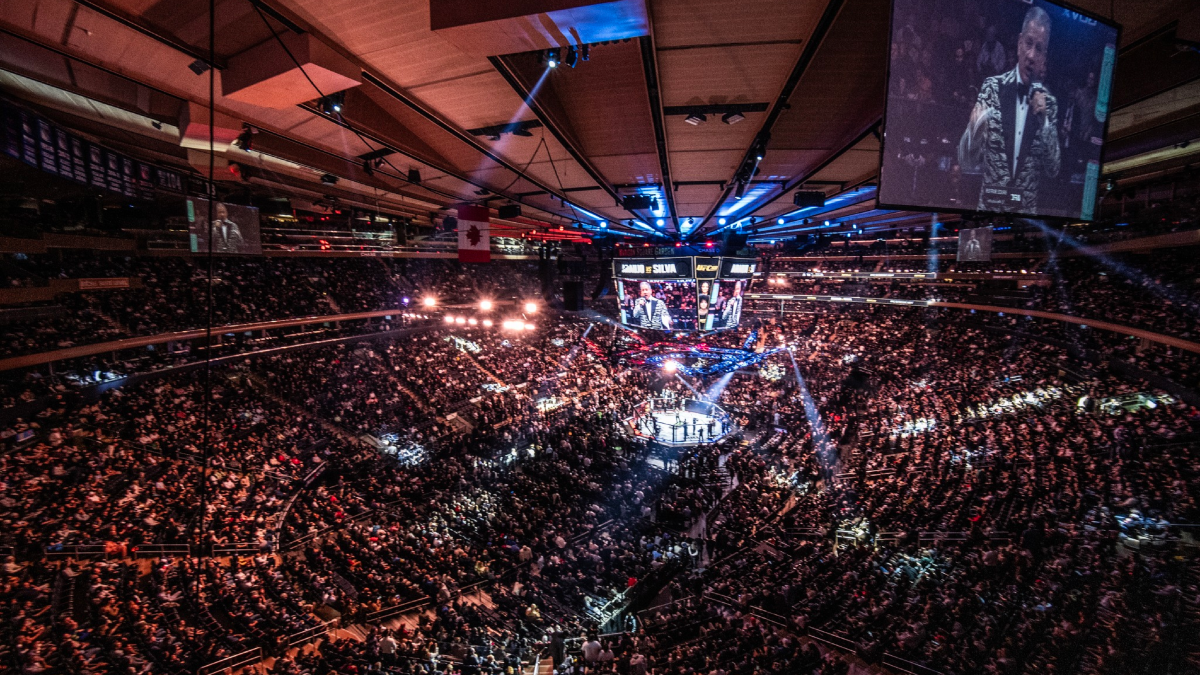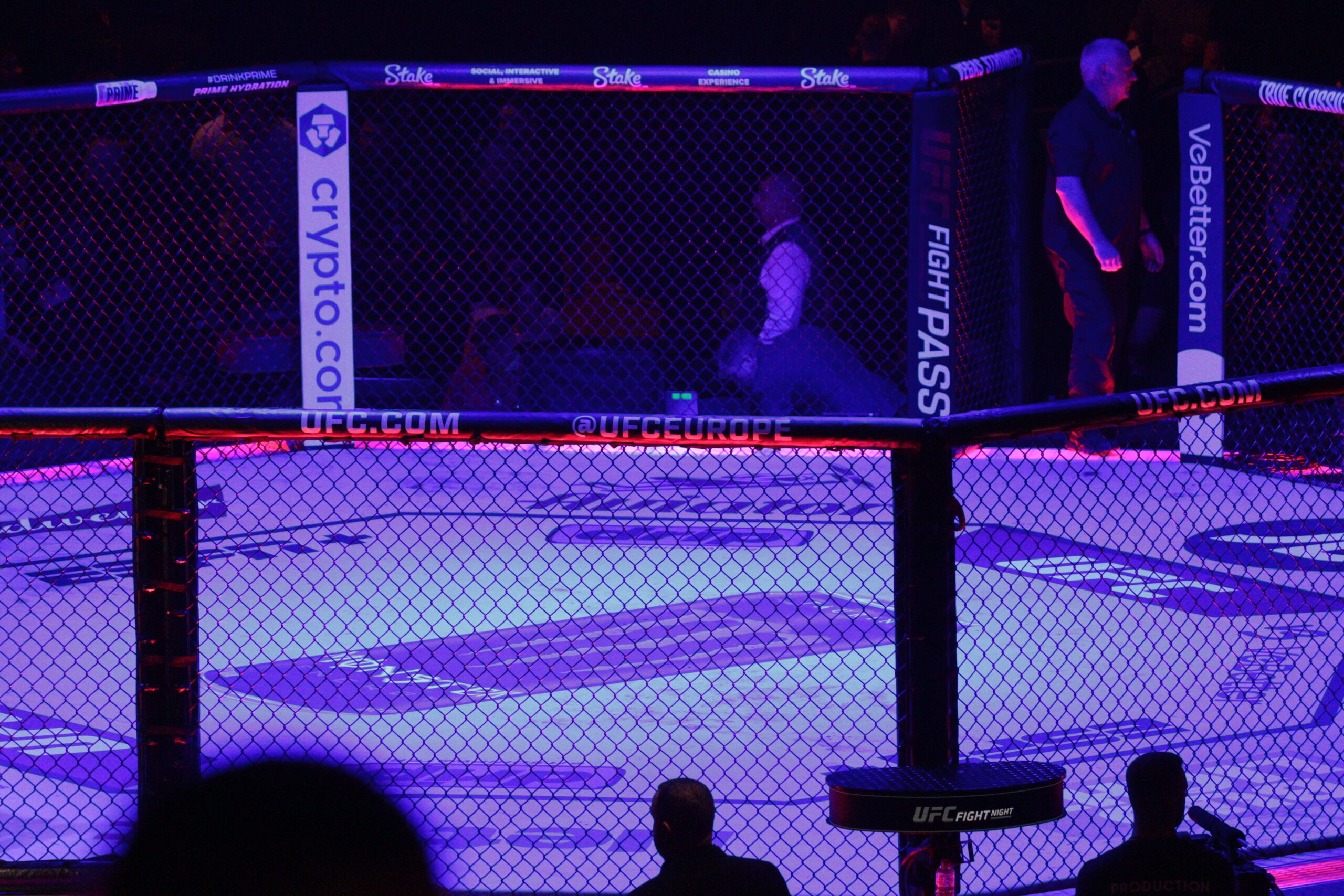It’s sadly not unusual for an MMA card to characteristic a fighter who missed weight for his or her bout. UFC Rio, nonetheless, offered us with a really ridiculous case.
The opening bout of the night noticed Luan Lacerda taking over Saimon Oliveira — a fighter who missed weight by eight kilos. The bout ended up contested at 144 kilos, making it extra like a featherweight contest than a bantamweight one. Oliveira additionally needed to weigh in underneath a certain quantity for the combat to even go on.
Lacerda gained the combat anyway, avoiding the controversial thought of a fighter lacking weight on function to get a bonus within the combat — in addition to fighter pay points in circumstances corresponding to these. Oliveira, actually, seemed horrible and drained, and his UFC future might be unsure.
However that doesn’t get us away from the controversy over how weight misses in MMA must be dealt with. Oliveira ended up forfeiting 50 % of his combat purse, which implies he didn’t make some huge cash for this loss. Historically, commissions penalize MMA fighters 20-30 % of their purse for such weight misses, so this type of nice is an efficient assertion.
Maybe that would set a precedent for different potential penalties that may very well be “excellent” options for these sorts of points.
Share Improve For Fines With Every Weight Miss
This concept relies off of the larger fines for greater weight misses in MMA — and the acute case within the case of Oliveira from UFC Rio.
Basically, on this situation, a second (or later) weight miss after an preliminary one ends in an elevated set minimal of nice for the fighter that misses weight. Whereas, as mentioned, most circumstances see an MMA fighter get fined a minimal of 20 % of their combat purse for a weight miss, a second weight miss would imply the fighter’s minimal nice will get elevated to 25 %.
Let’s use Charles Oliveira for instance. The burden miss for his 2012 bout with Cub Swanson would have resulted within the regular 20 % purse nice. However his second weight miss, which got here in opposition to Jeremy Stephens, would see a minimal of a 25 % purse nice with this rule, and a minimal 30 % for his weight miss in opposition to Myles Jury. That stated, an excessive case — corresponding to Oliveira’s 10-pound miss in opposition to Ricardo Lamas — may end in a share nice that’s greater than the minimal.
This rule can even apply to only a sure timespan, corresponding to 12-18 months. In a case like this, Charles Oliveira’s weight miss in opposition to Stephens would nonetheless simply be a 20 % minimal, because it got here two years after the Swanson combat. However the weight miss in opposition to Jury would see the bump up in minimal because it got here a 12 months later.
Forcing Fighters To Transfer Up After Two Weight Misses
If weight slicing isn’t going to go away on this sport, since MMA fighters and their groups like to have the dimensions benefit in a combat, then maybe we have to extra strictly come down on fighters who can’t sustain on the burden slicing duty to keep up such benefits.
On this circumstance, a second weight miss ends in the fighter being mandated to maneuver up in weight class. There aren’t any exceptions. Whether or not it’s a fighter who’s combating on the undercard, or a fighter who was nearing a title shot in a weight class, a second weight miss means their run in that division is over. They have to transfer up in weight or they won’t be permitted a license to combat.
It sounds harsh. However the intention is to combat again in opposition to the hurt performed to 1’s physique throughout a weight lower — and to combat again in opposition to a fighter who may willingly miss on function (like Yana Santos accused Macy Chiasson of doing not too long ago). The California State Athletic Fee, actually, has guidelines in place that may drive fighters to maneuver up relying on how a lot weight they’re slicing and rehydrating to, or combat cancelations relying on the extremity of an MMA fighter’s weight miss.
However with this case, it’s not simply fighters and state athletic commissions who should take duty, it might even be on the promotions to be required to observe such measures.

Automated One-Level Deduction On The Scorecards
That is maybe the harshest of all circumstances, however I imagine it’s one which could be essential to get enhancements transferring — and it’s the one I most help.
On this circumstance, a fighter who misses weight is delivered to the middle of the cage immediately and issued a one-point deduction instantly because the combat begins. Because of this this fighter can solely earn a most of 9 factors for the opening spherical and primarily should sweep three rounds on two judges’ scorecards to get a choice win. Dropping a spherical would imply a combat that goes to the scorecards sees that fighter solely in a position to earn a draw at finest.
The PFL did one thing like this when utilizing its common season-playoff format. A fighter who missed weight misplaced one level within the standings, and that later noticed a change the place that fighter was unable to earn any factors within the standings. There was additionally the controversial shedding one level implementation in PFL Europe’s event format. No matter what you consider the PFL’s utilization of those created concepts, I believe they have been getting someplace with how laborious it’s worthwhile to come down on fighters for this circumstance.
Making weight is a matter of professionalism. And if we will’t eliminate it in MMA, then we now have to come back down harshly on it for the respect of these fighters who’re accountable with their weight slicing and for these MMA fighters who maintain making weight in needed regard.
Who is aware of if any of those concepts really get applied sooner or later? However hopefully we as an MMA neighborhood can focus on these concepts to result in needed change for the sake of the fighters and the game as an entire.
































